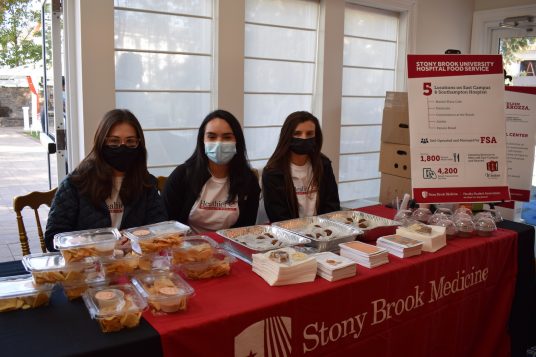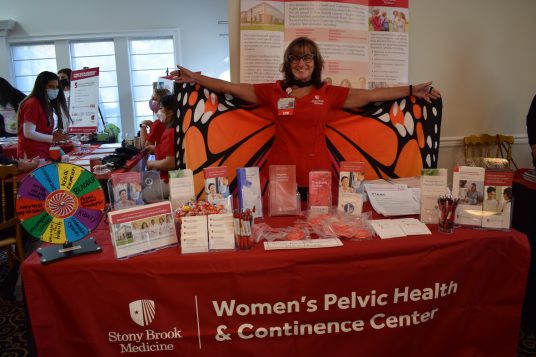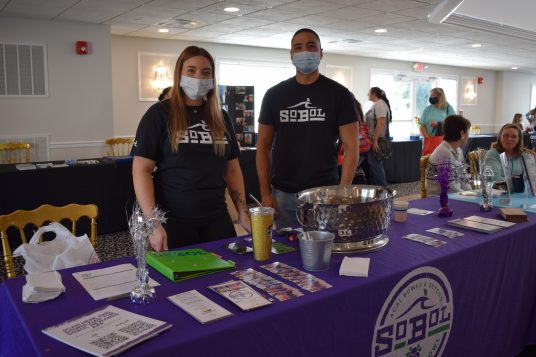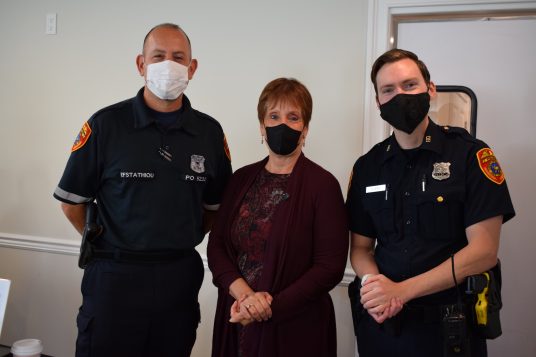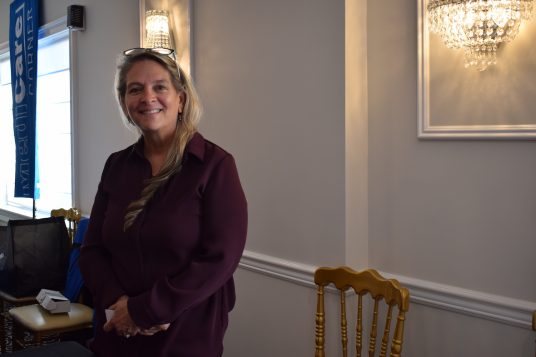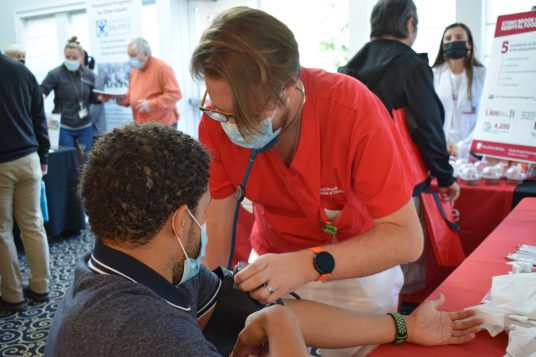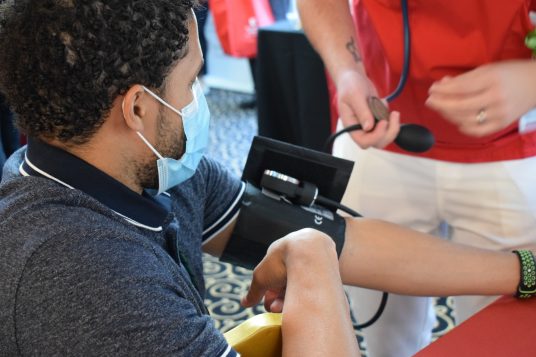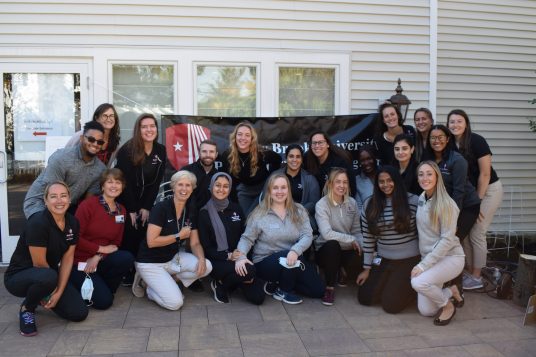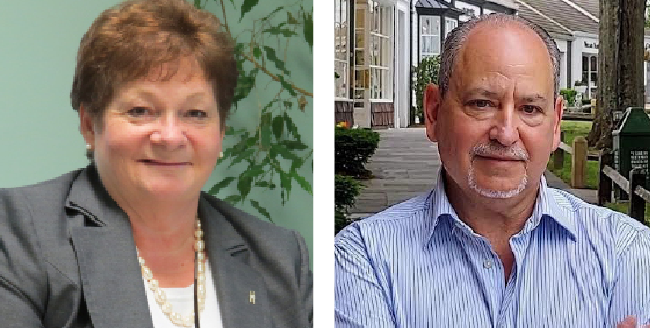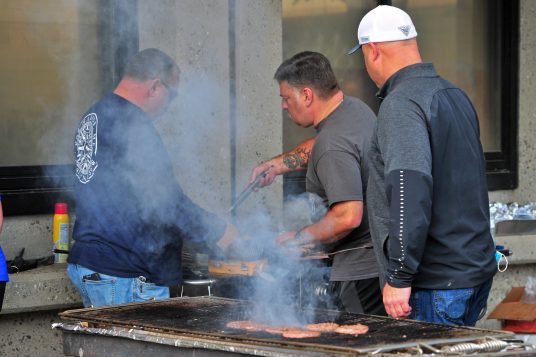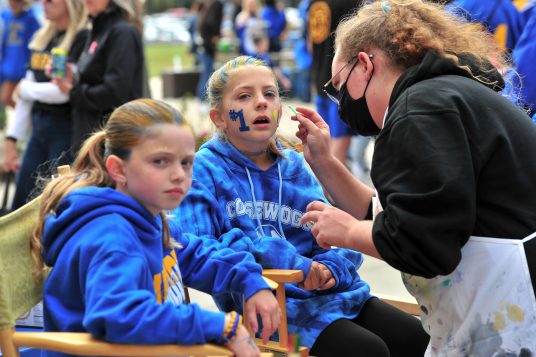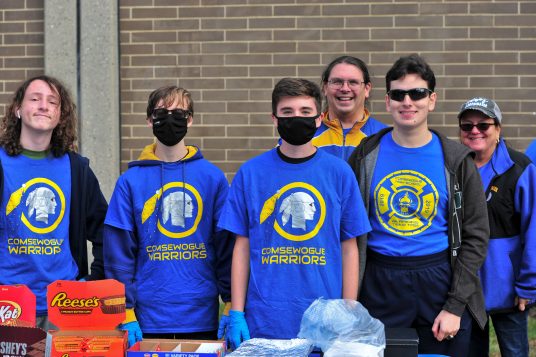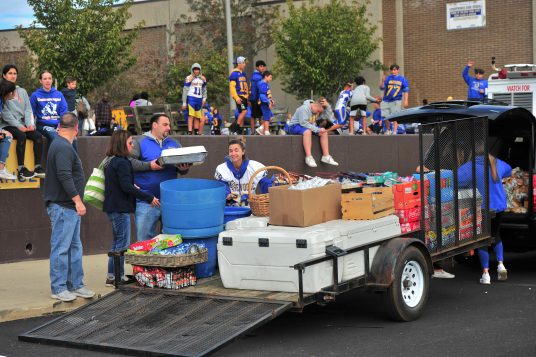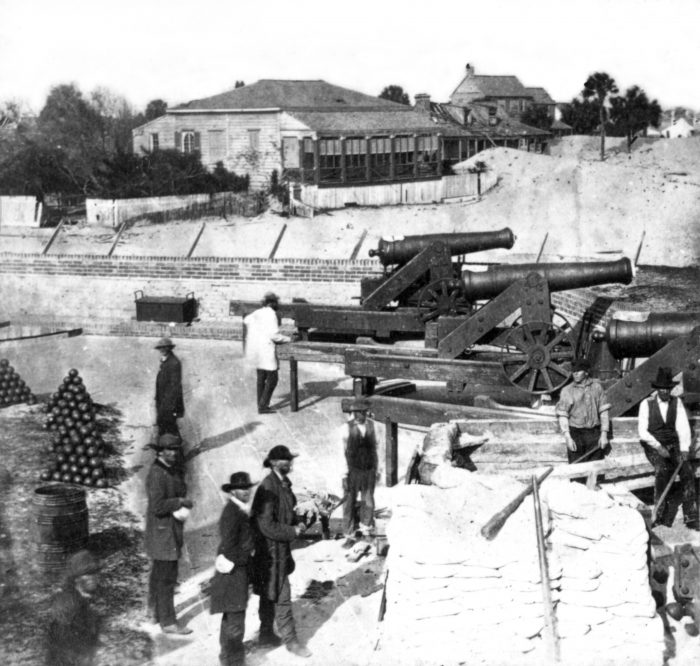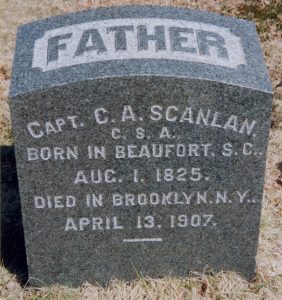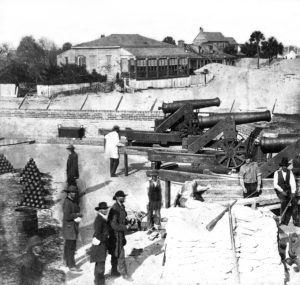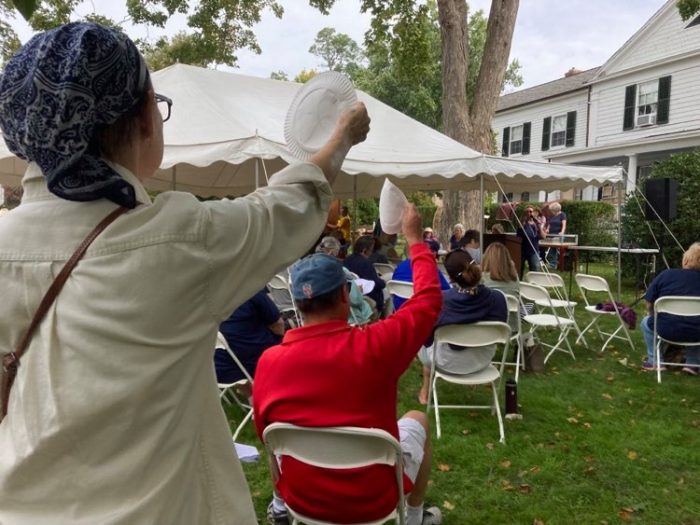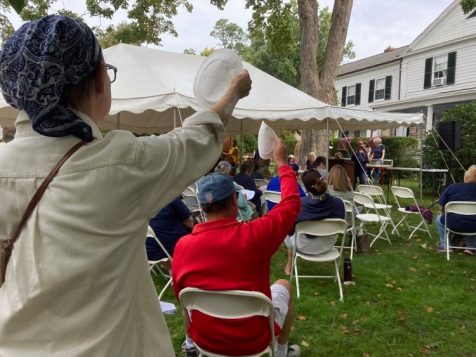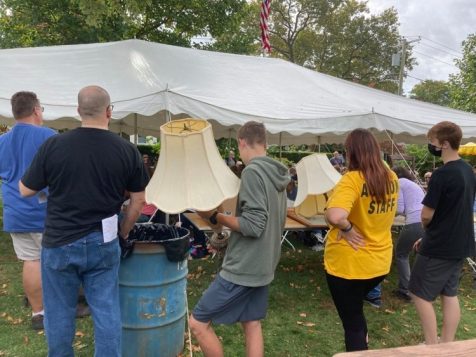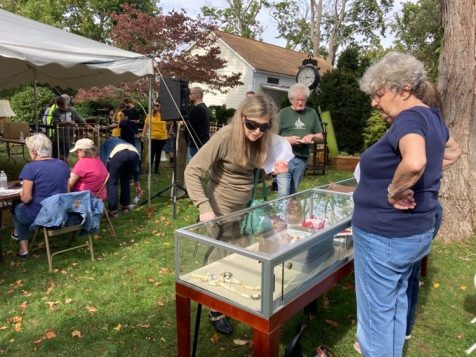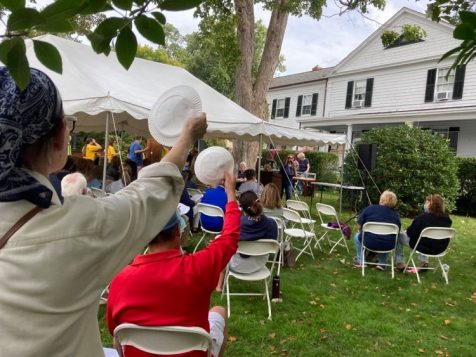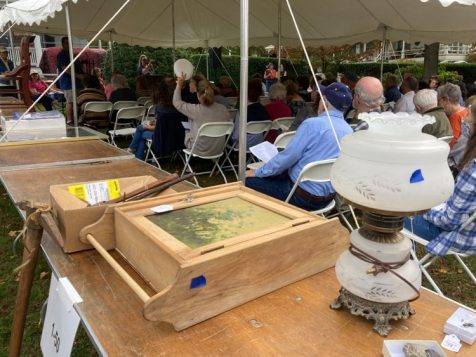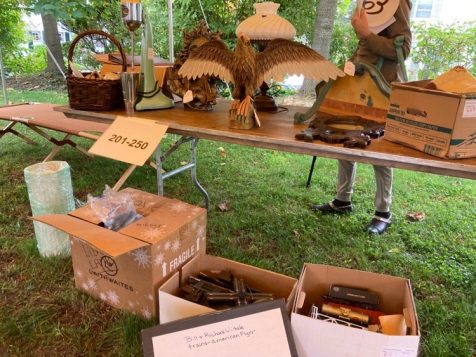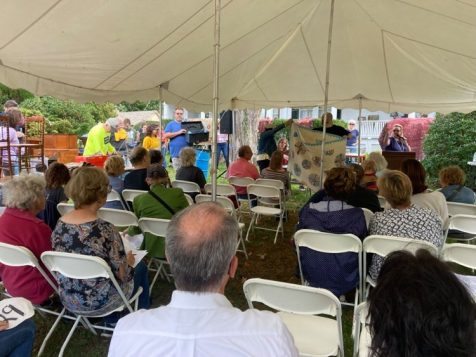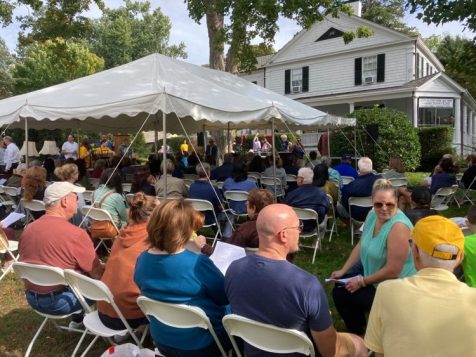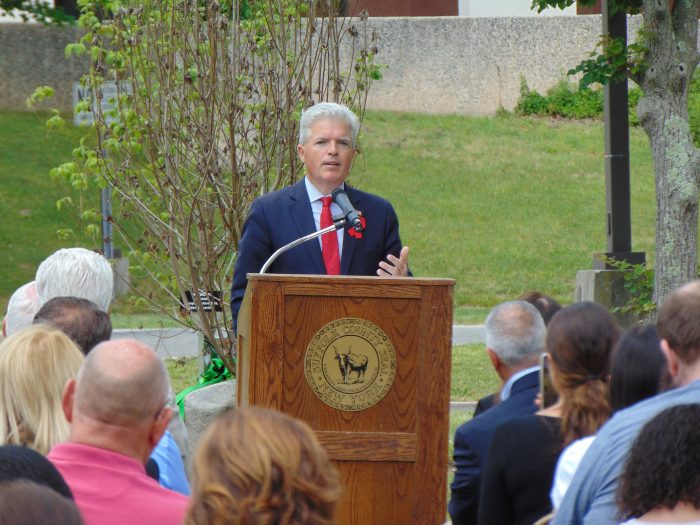Errol Toulon Jr. (D) is running again for his seat as the Suffolk County sheriff with the hope to continue his efforts providing aid services for nonviolent inmates alongside the office’s law enforcement work with gangs and sex trafficking.
Toulon’s opponent, William Amato, who is running on the Republican ticket, did not respond to multiple requests for a debate with TBR staff. The Suffolk County GOP office confirmed Amato is not actively campaigning.
Toulon, who has cross-party endorsements from both the Suffolk Democratic and Conservative parties, said his job as head of his department is “to take the brunt of everything, good and bad. And during these real challenging times, I have to ask, ‘How do I keep my staff calm, how do I keep them safe, how do I feel like they’re still valued?’” And compared to his previous positions in corrections, his current job gives him a satisfaction he hasn’t had before.
“I have a job now that directly impacts the community that I live and work in,” he said.
The Suffolk County Sheriff’s Office is the law enforcement branch dedicated to managing Suffolk’s jail system. Along with handling inmate populations, the office’s sheriff deputies are responsible for patrolling roadways alongside Suffolk County Police Department, investigating crimes committed on county property as well as managing the Pine Barrens protection hotline. The Sheriff’s Office also contains several specialized bureaus and sections for emergency management, DWI enforcement, domestic violence, among others.
Toulon, a former Rikers Island officer and captain, was voted into his first four-year term as sheriff in 2017 and was the first Black man elected to the role in the county’s history. Over those four years, his office has been involved with several high-profile drug and gang investigations, which included fact-finding trips to El Salvador and Los Angeles to investigate the connections of MS-13 to Long Island. He is proud of his office’s accomplishments, including his work with the office’s human trafficking unit and the creation of the START Resource Center, which provides inmates leaving county jails with employment and housing assistance as well as drug treatment and mental health care services.
But the year 2020 would throw a monkey wrench into all best-laid plans. Toulon said last year started out rough with the change to New York’s bail reform laws. Then the COVID-19 pandemic created a host of new challenges, especially safeguarding prison populations as well as corrections officers.
During COVID’s height, officers kept inmates largely separated, which resulted in a minimal number of reported cases in Suffolk jails. Still, the year did have its share of tragedies, including the loss of Investigator Sgt. Keith Allison, a 25-year veteran of the office who died from issues relating to the virus in December. Recently, the Sheriff’s Office had to cancel its open house and family day due to staff shortages and the spread of the Delta variant. The sheriff’s website reports that, in September, 29 inmates tested positive for COVID, where 26 of those reportedly contracted the virus while in jail. Inmates are required to quarantine in a special housing pod for 14 days before being moved to general housing. Staff must take temperature checks and wear masks when coming into the facilities.
And all these extra protections have exacerbated current staffing shortages. Toulon said the Sheriff’s Office is currently down around 180 corrections officers and 43 sheriff’s deputies.
The recruitment struggle is one felt across many industries, law enforcement not excluded, though Toulon said his office has a uniquely difficult time getting people to apply, to have applicants pass the required tests and then to keep them on after they’ve had a taste of what can be a trying job at times. The challenge in recruiting is partially due to what he said has been a degradation of trust between law enforcement and the community since the start of the 2020 Black Lives Matter protests. The Suffolk sheriff has also seen more senior officers retire because of health concerns during the pandemic, and because of COVID they were not able to host any new police classes last year.
Though there are currently over 1,700 people who are ready to take the next law enforcement exam in November, the expected acceptance rate is normally around just 15% to 20%, Toulon said. This lack of staff also has the effect of increasing required overtime for current officers, leading to faster burnout.
“Sometimes, even when you get through the entire process and they have their first days in a jail when they’re working a lot of overtime, having to deal with inmates … it becomes challenging on the individual, especially someone that’s not used to it,” the sheriff said.
It’s another stress on a system that he said requires more financial help to truly give aid to the transient, nonviolent jail populations who need it. Toulon would like to see more psychologists and psychiatrists within the jail providing counseling, though there’s currently no budget for it.
“The mental health institutions throughout New York state were closed in the 1980s or 1990s, and so these individuals are winding up in jail, but [state government] never funded the jails,” he said. “The staffing model for the Sheriff’s Office was really from a 1960s or ’70s version, and it hasn’t been updated to what we need to do to address the particular individuals in our custody.”
Though the sheriff said their new initiatives have not increased the office’s budget, he is still banging the drum for more funding. Suffolk County reportedly received approximately $286 million in aid from the federal American Rescue Plan back in May, though Toulon said they have not received any percentage of those funds. County spokesperson Derek Poppe said in an email that no ARP money is slated to go to the sheriff’s department.
Challenges still exist for Suffolk jails due to the pandemic. Corrections officers are still required to wear masks on their shifts. At the same time, only around 40% of corrections officers are currently vaccinated. There is no legal requirement for Suffolk law enforcement to be vaccinated in order to work, and while Toulon is fully vaccinated, he said he told his staff to consult their primary care physicians to make that determination.
“I understand it’s an individual’s choice at the moment,” he said.
The number of people incarcerated in Suffolk jails hovers around 780, according to the sheriff, though that population is transient, and can change from day to day. The Sheriff’s Office, through the Suffolk County Department of Health Services, has tried to provide vaccinations for its inmates, leading to around 350 so far. Still, only approximately 30% to 40% of that jail population is currently vaccinated. “All we can do is just try to encourage the inmates to at least receive the vaccine — hopefully help them learn a little bit more if they’re a little skeptical before making that decision,” he said.
As for the future, the sheriff said he wants to work hard to make sure that the majority of the inmate population — all those who are nonviolent and not a danger to the community — receive the social services they need.
“Everybody should be held accountable for their actions, I should be very clear on that, and [incarceration] is necessary for those who would do harm to be removed from society,” Toulon said. “But those men and women that are going through domestic violence, substance abuse — we have many victims of human trafficking that are in our custody, many females that we’re working with — we want to help them, empower them so that they can support themselves and support their families.”



